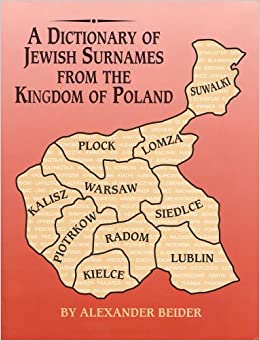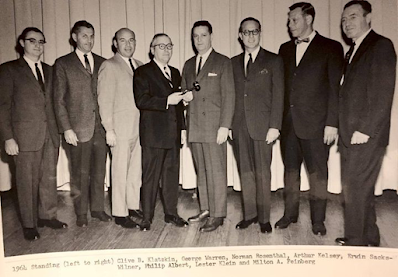Passover, fpor 2023, April 5 eve-April 13 sundown
The History of 7 Passover Traditions
BY SARAH GRAY
UPDATED: APRIL 13, 2022 3:55 PM EDT | ORIGINALLY
PUBLISHED: MARCH 15, 2018 1:54 PM EDT
Why is Passover celebrated?
Passover
commemorates the Biblical story of Exodus (God freed the Israelites from Egyptian
slavery). Passover is prescribed in the book of Exodus. The holiday is
often celebrated for eight days (seven in Israel for non-traditional Jews).
Passover
incorporates themes of springtime, a Jewish homeland, family, remembrance of
Jewish history, social justice, and freedom, all discussed during the Passover
seder.
Whether or not
the Exodus happened remains unclear, and it continues to be a mystery that
still confounds biblical scholars and archeologists alike.
Elon Gilad, who writes about
history and language, told the Israeli newspaper. Haaretz that Passover traditions,
although arguable historically, came about by merging two ancient festivals
celebrating spring, one of nomadic origin and one from villages.
When is Passover?
Passover takes
place in early spring during the Hebrew calendar month of Nissan, as prescribed
in the book of Exodus. Exodus 12:18 commands
that Passover be celebrated, “from the fourteenth day of the month of Nissan at
evening, you shall eat unleavened bread until the twenty-first day of the month
at evening.” (The Gregorian date varies from year to year because the Hebrew calendar
has only 354 days a year, correctable every three years)
Because the
Hebrew calendar does not match up with the Gregorian calendar, the date of
Passover (along with other Jewish holidays) changes every year.
Passover dates
for 2022 are April 15 through April 23.
What is a Haggadah?
A Haggadah is a
book read during the seder that tells the story of Passover. The Hebrew word
“Haggadah” means “telling,”
In contemporary
Passover celebrations, relevant political or social justice themes have been
incorporated into the seder
Passover story
Egypt’s Pharaoh,
fearful that there will be too many Jews living in Egypt, institutes slavery and demands that male
Jewish babies be killed.
Baby Moses is
saved by his mother, who floats him in a basket down the Nile river, where he
is found and adopted by the Pharaoh’s daughter. After killing a slave master,
Moses flees into the desert and encounters a burning bush of God revealing
himself to Moses. God tells Moses to go to Pharaoh and lead the Jews out of
slavery.
Moses goes to
the Pharaoh and asks that he let the Jews go free from Egypt. Each time the
Pharaoh says “no,” God sends a plague down on Egypt (darkness, lice, boils,
cattle disease, etc.). The tenth and final plague is the most drastic: the
killing of the firstborn (humans and animals) by the angel of death. To protect
their firstborn children, the Israelites marked their doors with lamb’s blood
so the angel of death would pass over them - thus the name Passover.
The Israelites
were ultimately freed from slavery and wandered the desert for 40 years before
making it to the promised land.
The Seder
The Hebrew word
“seder” translates to “order. The Passover seder is a home ritual blending religious
rituals, food, song, and storytelling. Families hold a seder on the first and
sometimes second night of Passover.
It is
fundamentally a religious service set around a dinner table, where the order in
which participants eat, pray, drink wine, sing, discuss current social justice
issues, and tell stories is prescribed by a central book called the Haggadah.
Key Symbols Of The Seder
The seder plate
contains symbols for Passover: A roasted shank bone represents the Pesach
sacrifice, an egg represents spring and the circle of life, bitter herbs
represent the bitterness of slavery, charoset (an applesauce-like mixture with
wine, nuts, apples, etc.) represents the mortar used by the Jews in Egypt,
karpas (or greens, often parsley) represent spring.
On the table
are three pieces of matzah (a cracker-like unleavened bread) representing the
bread the Israelites took with them when they fled Egypt, and salt water to
represent the tears of the slaves.
Another custom
is to drink four glasses of wine.
There may also
be one or two extra kiddish cups at your table: One is a cup of wine for the prophet
Elijah whose spirit visits on Passover. In some families, a cup of water is set
out for Moses’s sister Miriam.
On the chairs,
you may see pillows. This is because on Passover you are supposed to recline at
the table as a symbol of being free.
Don’t worry if
you can’t keep this all straight. Because Passover is a retelling of a story to
new generations, and due to the seder’s prescribed order, the Haggadah does a
pretty good job explaining many key elements and symbols as you read along.
There is even a specific section of the seder called the four questions, where
the youngest person at the table asks about the different Passover symbols and
the elders explain.
What are traditional Passover foods?
The meal’s menu will differ depending
on family tradition. Traditional dishes include matzo ball soup, gefilte fish, beef
brisket, chicken, and potatoes. Traditional Sephardic (Mediterranean and
Spanish) Passover foods reflect a Mediterranean spin on the Passover dinner.
Jews Do Not leavened bread during Passover
leavened foods
made of grain known as “chametz.” Chametz is prohibited during Passover, so you
won’t find any pasta, cookies, bread, or cereal at the seder. (There are
exceptions in different traditions, such as the Sephardim, descendent of Spain).
More traditional Jews will completely clean out any foods containing chametz
from their home.)
This has to do
with the story of Passover: After the killing of the firstborn, the Pharaoh
agreed to let the Israelites go. But in their haste to leave Egypt, the
Israelites hurried such that their bread could not rise and so they brought
unleavened bread. In Exodus 12:14, “You shall eat nothing
leavened; in all your dwelling places you shall eat unleavened bread.”
If you want to
bring something for the host, pick up an item from the kosher for Passover
section of your supermarket, or stick to a bottle of kosher wine or flowers.
Time Magazine. https://time.com/5188494/passover-history-traditions/



Comments
Post a Comment